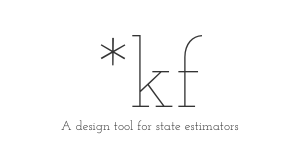pmfdraw
Draws samples from a probability mass function defined by an array of discrete probabilities.
indices = pmfdraw(p)
indices = pmfdraw(p, n)Inputs
p | Array defining a probability mass function |
|---|---|
n | Number of draws to make (defaults to the length of |
Outputs
indices | Random draws corresponding to indicies of |
|---|
Example
We'll create a 3-element probability distribution, where the first element occurs 25% of the time, the second element occurs 40% of the time, and the third element occurs 35% of the time.
p = [0.25 0.4 0.35];We can make 1000 random draws from this distribution. Approximately 25% will be 1, 40% will be 2, and 35% will be 3.
indices = pmfdraw(p, 1000);Let's see how we did:
sum(indices == 1)/1000
sum(indices == 2)/1000
sum(indices == 3)/1000ans =
0.2490
ans =
0.4030
ans =
0.3480Particle filters use discrete probabilities as "weights" for each particle, so that particles that produce predictions of the observation that are consistent with the true measurement end up with a higher probability. These most-likely particles are more likely to be selected during resampling, resulting in a clustering of particles near high-probability areas of the state space. This function is useful to randomly draw the particles to select according to their individual "probabilities".
See Also
*kf v1.0.3 January 17th, 2025
©2025 An Uncommon Lab
